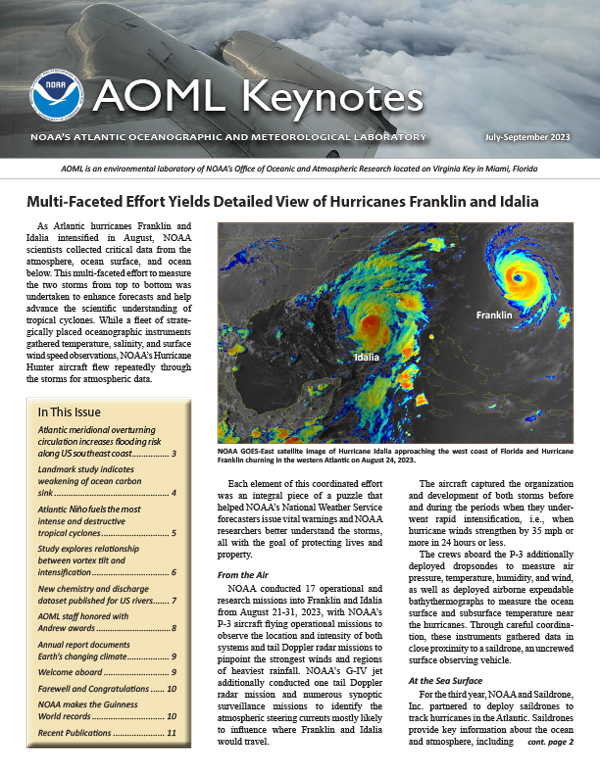Photo Gallery
July-September 2023 Keynotes

 
Tweets by NOAA_AOML

Categories
- Corals (21)
- Engineering Solutions (9)
- Events (81)
- Featured at NOAA (32)
- Hurricane Research (128)
- Ocean Chemistry and Ecosystems (181)
- Oceans Influence on Climate & Weather (71)
- Photo Gallery (106)
- Physical Oceanography (185)
- Publication Stories (51)
- Quantitative Observing System Assessment Program (1)
- Research Partnerships (84)
- Scientific Papers (Abstract & PDF) (69)
- Scientist Interviews (37)
- Staff Page (12)
- Uncategorized (125)

